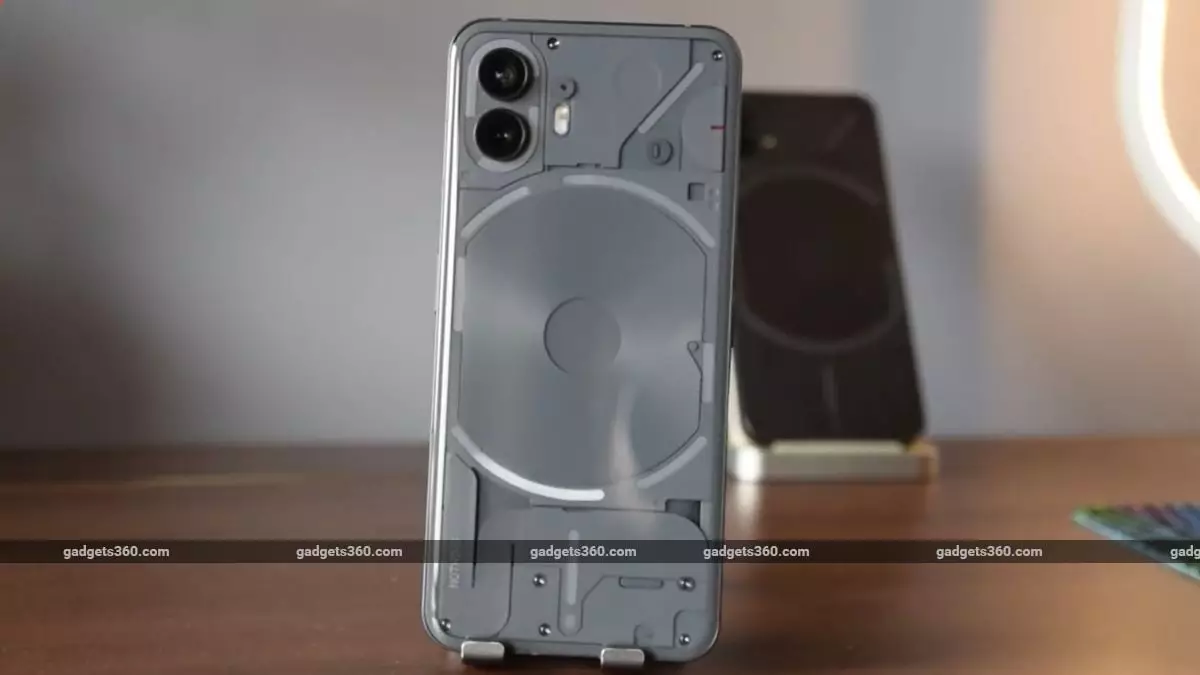Nothing’s latest smartphone, the Nothing Phone 3, officially launches today, promising to redefine the flagship segment with its bold specs and design. Positioned as the UK-based company’s “first true flagship,” the Phone 3 aims to capitalize on the momentum garnered by its predecessor. However, the initial excitement around the device is somewhat tangled with skepticism, especially regarding its pricing strategy. At an estimated price near £800 (around ₹90,000), the Phone 3 nearly doubles the launch price of the Phone 2 in India. This steep price increase raises fundamental questions about whether Nothing’s ambition aligns with market realities or merely threatens to price out its existing user base.
The flagship smartphone sector is notoriously unforgiving; incumbents like Apple and Samsung control consumer expectations and ecosystems that are hard to rival. Nothing hopes to carve out a niche by blending distinct design elements and high-end specifications, but a premium price tag can alienate the very audience that embraced them as an accessible alternative to mainstream giants. In a market where consumers demand undeniable value, offering cutting-edge technology without a commensurate price-to-performance justification risks relegating the Phone 3 to mere curiosity rather than a serious contender.
Design Evolution or Mere Gimmick?
One of the Phone 3’s standout features is the transition from the iconic Glyph Interface — a set of customizable LEDs arranged on the phone’s back — to a new “Glyph Matrix.” While this shift signals Nothing’s intent to innovate visually, it also invites critical scrutiny about practicality and appeal. The Glyph Interface was initially lauded for its unique approach to notification alerts and design flair, which allowed the brand to distinguish itself amid the sea of bland slabs most smartphones present.
Yet, evolving this aesthetic feature may not necessarily equate to functional enhancement. Tech enthusiasts who appreciated the Phone 2 for this quirk may find themselves alienated if the Glyph Matrix feels like a superficial change rather than a meaningful upgrade. A phone’s design innovation must transcend mere visual differentiation to justify user investments, particularly at flagship price points. Whether the Glyph Matrix fulfills that promise remains to be seen, but the gamble here is that form overtakes function.
Impressive Hardware Cloaked in Familiar High-End Specs
Technically, the Nothing Phone 3 does tick many boxes expected of a flagship device. It boasts a sizeable 6.7-inch LTPO OLED display with a smooth 120Hz refresh rate, catering to users who prioritize immersive visual experience. More importantly, the camera module is headlined by a 50-megapixel periscope telephoto lens with 3x optical zoom, complemented by a 50-megapixel wide and ultra-wide setup. Such a triple-camera assembly positions the Phone 3 as a serious photo-centric handset.
Under the hood, the inclusion of Snapdragon’s 8s Gen 4 chipset promises substantial improvements—reportedly 36% in CPU, 88% in GPU, and 60% in NPU performance compared to the phone’s predecessor. This generation-on-generation jump is impressive on paper, and the commitment to five years of Android updates along with seven years of security patches offers a commendable promise of software longevity, an area where many competitors fall short.
Moreover, the rumored 5,150mAh battery supporting 100W fast charging, wireless and reverse wireless charging, attempts to cover all bases, meeting the demands of heavy users. Yet, these specifications, though solid, unremarkedly echo many current flagships available today. The question is whether the Phone 3’s hardware package offers a compelling enough reason for consumers to move beyond entrenched brands, especially at its new premium price.
Brand Identity in an Overcrowded Space
Nothing’s journey from quirky startup to a contender in the flagship smartphone landscape highlights the challenges emerging brands face when scaling ambitions too fast. The Phone 2’s appeal partly stemmed from disrupting expectations — combining minimalist design, the Glyph interface, and a reasonable price tag. But increasing the cost by nearly twofold risks eroding the trust of early adopters and confusing the brand’s value proposition.
In a tech world where innovation is often incremental but accompanied by aggressive pricing and vast ecosystems, Nothing needs to carefully balance flashy gimmicks, genuine performance, and consumer affordability. Without unequivocal advantages over competitors’ offerings—and backed by a mature ecosystem—the Phone 3’s lofty aspirations may falter.
The company’s gamble embodies a larger trend in technology where niche players rapidly strive for flagship status, sometimes losing sight of the compromises that make such products successful. It remains to be seen if Nothing can deliver not just a “flagship phone,” but a flagship experience worthy of its new price and marketed promise. At the very least, the Phone 3 sparks a necessary conversation about what consumers truly value when choosing their next smartphone.


Leave a Reply